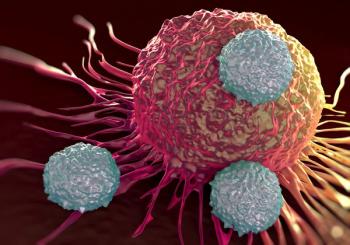
Patient Monitoring and Workup in Relapsed MM
Experts on multiple myeloma discuss approaches to laboratory workup and patient monitoring at the time of relapse.
Episodes in this series

Transcript:
Ola Landgren, MD, PhD: [Regarding] when a patient is relapsing—over 90% of patients will have their first relapse, [which is] usually a serologic relapse where we can see their protein levels go up. In my experience, even a patient who has a second relapse—that’s not uncommon that it’s a serologic relapse. I think in that same vein, for patients who have a third or fourth or fifth relapse over time because the disease genomically seems to be more advanced, it usually also involves many other labs and it could eventually also turn into symptomatic relapses. There are patients we know [who] have symptomatic relapses early on. But over time that will happen and that will, of course, imply that we need to think about additional work-up, we may do bone marrow biopsies, or we may do whole-body PET-CTs. But in the standard-of-care setting, there is no mandatory work-up required for patients [who] have a relapse outside a clinical trial.
In my practice, when a patient relapses and has more symptoms, I would immediately think about all these different work-ups. If a patient is frail, older, and there’s just a serologic relapse, maybe we switch therapy in the absence of additional work-ups. I would tailor it around the individual patient. What do you think, Ben?
Benjamin Diamond, MD: Yes, you hit the nail on the head. Everything is tailored to the individual patient. As always, more information is better, and the more information that we have, the better the decisions that we can make. But if you have a patient [who] can’t undergo bone marrow, there’s no absolute need to perform one if you know that a relapse is happening biochemically and have another therapy lined up for that patient.
Ola Landgren, MD, PhD: In that same vein, there are patients over time, as we know, [who] could have nonsecretory or low-secretory relapses—meaning that when we track the disease over time, we don’t find evidence of rising monoclonal proteins or rising light chains. And if we, for example, were to do a PET-CT, we could see there could be areas of increased SUV [standard uptake values]. You have seen that many times in clinic, Dennis?
Dennis Verducci, APRN: Absolutely. We’ve had a number of patients who, as you said, it’s mostly not really in the first 2 relapses but maybe 3, 4, and 5 relapses that their markers will show no detectable disease but then you do a PET-CT and they have hypometabolic lesions.
Ola Landgren, MD, PhD: So, is there any recommendation or any kind of thinking internally? We cannot really recommend what to do, but internally, would we do PET-CT once a year or every other year, or every 6 months? Or is there any kind of standard principle that we follow?
Dennis Verducci, APRN: For a patient who is in remission or for a patient—?
Ola Landgren, MD, PhD: Yes, a patient who is on maintenance therapy or continued therapy in the relapse setting.
Dennis Verducci, APRN: Yes. So, if the patient had evidence of radiographic disease at diagnosis and we treated them with induction therapy and we put them on maintenance, we would always do a restaging workup after induction. I would not wait 1 year to reimage them. I would probably image them 6 months into maintenance and then again at the 1-year mark into maintenance I would do a bone marrow and a PET-CT. And if it’s negative then, at the 1-year mark after maintenance, then I think it would be reasonable to go to annual.
Ola Landgren, MD, PhD: And in the relapse setting, would you do typically a PET-CT at the time of relapse in most patients?
Dennis Verducci, APRN: In most patients, I would do a bone marrow biopsy and a PET-CT. And then I would treat them. And if they had radiographic evidence of disease, I would do another PET-CT, say after about 3 or 4 cycles of therapy.
Ola Landgren, MD, PhD: And if that shows no evidence of disease, would you think about ordering another PET-CT later? Or is it too difficult to give a big picture of that? Is it too patient dependent?
Dennis Verducci, APRN: It would be on a case-by-case basis. If the patient has evidence of radiographic disease, I would image them probably at the 3-month mark after they start their therapy for relapse and I’d probably do another…in…3 to 6 months after that.
Ola Landgren, MD, PhD: So, [there are] different ways and I’m sure we have different perspectives. We can look at this particular case and we may say, do it after 4 cycles or 3 cycles or 6 cycles. That’s the beauty of medicine. And again, as I mentioned, that’s the reason there is more research going on, because we don’t always agree. So that’s a good thing.
Transcript edited for clarity.
Newsletter
Stay up to date on recent advances in the multidisciplinary approach to cancer.



















































































